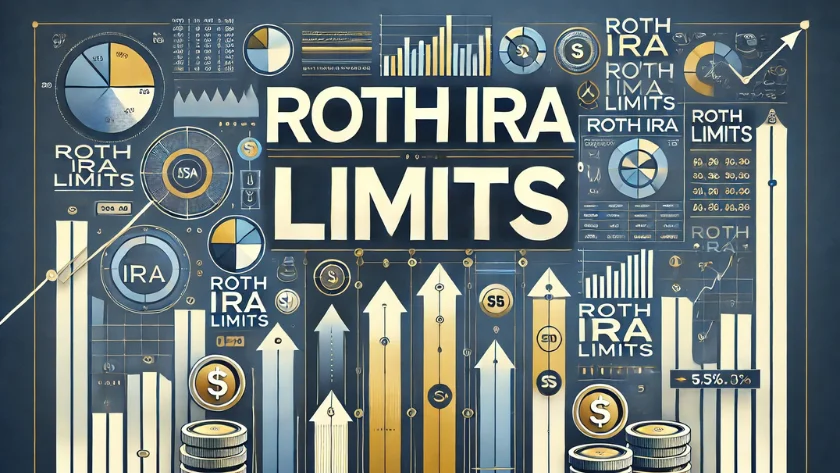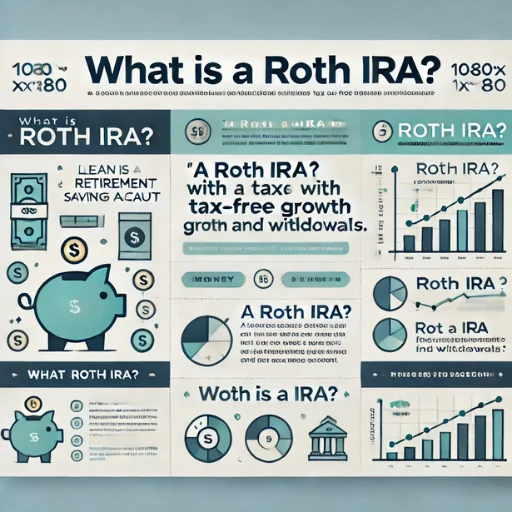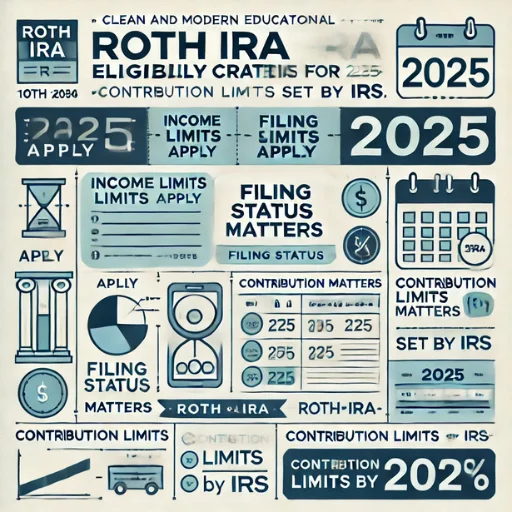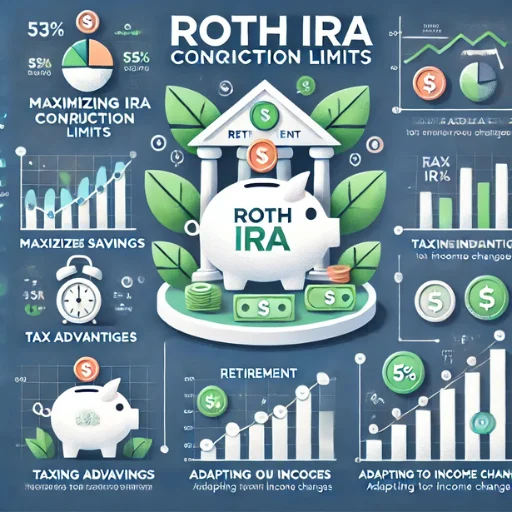Roth IRA Contribution Limits 2025: What You Need to Know

The Roth IRA (Individual Retirement Account) is a powerful retirement savings tool that allows individuals to save for retirement with tax-free growth. Unlike traditional IRAs, Roth IRAs offer the unique benefit of tax-free withdrawals in retirement, provided certain conditions are met. As we approach 2025, the IRS has updated the contribution limits for Roth IRAs, providing more opportunities for savers to take advantage of this retirement vehicle. This article will explore the 2025 Roth IRA contribution limits, eligibility criteria, how these changes impact your retirement strategy, and answers to frequently asked questions.
Understanding Roth IRA Contribution Limits
What is a Roth IRA?

A Roth IRA is a retirement account that allows individuals to contribute after-tax dollars. In return, the money grows tax-free, and qualified withdrawals in retirement are also tax-free. Roth IRAs are particularly beneficial for individuals who expect to be in a higher tax bracket during retirement, as they can pay taxes now and avoid paying them on withdrawals later.
Contribution Limits for 2025
The IRS adjusts the contribution limits for Roth IRAs periodically, typically based on inflation. For 2025, the contribution limits have increased, offering greater opportunities for savers to contribute to their Roth IRA accounts.
Standard Contribution Limits for 2025
- Under Age 50: For individuals under the age of 50, the maximum contribution limit to a Roth IRA for 2025 is $6,500.
- Age 50 and Older: For individuals aged 50 or older, the contribution limit is $7,500. This includes a $1,000 catch-up contribution to help those closer to retirement age save more.
These limits apply to the total contributions made to all IRAs, including both Roth and traditional IRAs, in a given tax year.
Roth IRA Eligibility Criteria for 2025

Income Limits for Roth IRA Contributions
While Roth IRAs provide significant tax benefits, not everyone is eligible to contribute. The IRS sets income limits based on your Modified Adjusted Gross Income (MAGI). For 2025, these income limits have been adjusted to account for inflation.
Income Limits for Single Filers
- Full Contribution: Single filers with a MAGI of up to $138,000 can contribute the full amount to a Roth IRA.
- Partial Contribution: Single filers with a MAGI between $138,000 and $153,000 can make a partial contribution.
- No Contribution: Single filers with a MAGI of $153,000 or more are ineligible to contribute to a Roth IRA.
Income Limits for Married Couples Filing Jointly
- Full Contribution: Married couples filing jointly with a combined MAGI of up to $218,000 can contribute the full amount to a Roth IRA.
- Partial Contribution: Married couples with a combined MAGI between $218,000 and $228,000 can make a partial contribution.
- No Contribution: Married couples with a combined MAGI of $228,000 or more are ineligible to contribute to a Roth IRA.
These income limits are crucial in determining how much you can contribute to your Roth IRA in 2025.
How Roth IRA Contribution Limits Impact Your Retirement Strategy?

Benefits of Roth IRA Contributions
Contributing to a Roth IRA offers several advantages for your retirement planning, especially if you expect to be in a higher tax bracket in the future. The main benefits include:
- Tax-Free Growth: Your contributions grow tax-free, which can significantly enhance your retirement savings over time.
- Tax-Free Withdrawals: Qualified withdrawals from a Roth IRA are tax-free, which means you won’t have to pay taxes on the money you withdraw in retirement.
- No Required Minimum Distributions (RMDs): Unlike traditional IRAs, Roth IRAs do not require minimum distributions at age 73, allowing your funds to continue growing for as long as you wish.
Maximizing Contributions for 2025
To make the most of your Roth IRA contributions in 2025, consider these strategies:
- Start Early: The earlier you begin contributing, the more time your investments have to grow. Even small contributions can compound over time.
- Contribute the Maximum: If you’re eligible, contribute the maximum amount to your Roth IRA each year to take full advantage of the tax-free growth and withdrawals.
- Utilize Catch-Up Contributions: If you’re 50 or older, take advantage of the catch-up contribution option to accelerate your retirement savings.
FAQs About Roth IRA Contribution Limits for 2025
1. Can I contribute to both a Roth IRA and a Traditional IRA in 2025?
Yes, you can contribute to both a Roth IRA and a Traditional IRA in the same year, but the total contribution to both accounts cannot exceed the annual limit. For example, if you’re under 50, you can contribute up to $6,500 in total between the two accounts.
2. What happens if I contribute more than the limit?
If you exceed the contribution limits for your Roth IRA, the IRS may impose a 6% excess contribution penalty for each year the excess amount remains in the account. To avoid this penalty, you should withdraw the excess contributions as soon as possible.
3. Can I contribute to a Roth IRA if I earn too much money?
If your MAGI exceeds the income limits for Roth IRA contributions, you will not be eligible to contribute directly. However, you can consider a backdoor Roth IRA strategy, where you contribute to a Traditional IRA and then convert it to a Roth IRA.
4. Can I still contribute to a Roth IRA if I’m over 70?
Yes, there is no age limit for contributing to a Roth IRA as long as you have earned income. This is a key advantage of Roth IRAs over traditional IRAs, which impose age restrictions on contributions.
5. How do I know if I qualify for a Roth IRA?
To determine if you’re eligible to contribute to a Roth IRA, check your MAGI against the income limits for your filing status. If your income is within the limits, you can contribute the full or partial amount to a Roth IRA.
Conclusion
The Roth IRA remains one of the most effective retirement savings vehicles, offering tax-free growth and withdrawals for those who meet the eligibility requirements. With the 2025 contribution limits offering higher opportunities for savings, now is the perfect time to review your retirement strategy and take full advantage of the benefits of a Roth IRA. Whether you’re under 50 or taking advantage of catch-up contributions, the Roth IRA provides flexibility and long-term growth potential that can help secure your financial future.
Remember to stay informed about your eligibility based on income limits and ensure you’re contributing within the prescribed limits to avoid penalties. If you’re uncertain about your eligibility or how to maximize your Roth IRA contributions, consulting a financial advisor can help you make the best decisions for your retirement planning.






